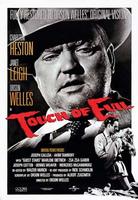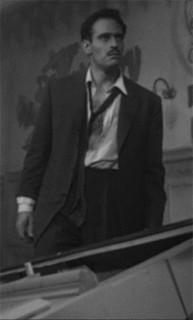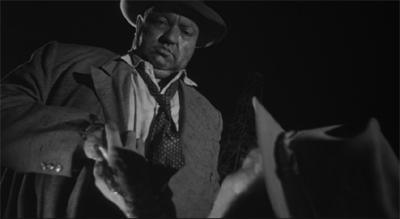A Day Without a Mexican
 A Day Without a Mexican (2004) is a mockumentary that imagines what would happen were all the Mexicans to disappear from California. The movie stresses the role of the media, and so it begins with an emergency news broadcast announcing that “the Mexicans are all gone.” Next the scene shifts to a few days before the disappearance and shows a montage of Mexicans working at various jobs, to show how Mexicans are an integral part of California life. But it remains to be seen of how much their contributions are appreciated, as an interview with the California State Senator Stephen Abercrombie (John Getz) reveals that he has to defend himself against his wife hiring illegal immigrants to paint their living room. Next the images move to an anti-immigration protest on the Mexico-California border where activists complain that Mexicans are taking jobs from Americans, eating up the economy’s welfare, and bringing drugs into the country. Budding news reporter Lila Rod (Yareli Arizmendi) is then shown auditioning for employment at the local news station. A man from the station tells her not to Americanize her Spanish seeing as many Latinos have no career without their accents. A contrast of immigration views is then presented between a father and son; the father whose best friend is a Mexican working on his farm, and the son who suffers from the prejudice paranoia that the Mexican workers will hurt his child or his father’s business.
A Day Without a Mexican (2004) is a mockumentary that imagines what would happen were all the Mexicans to disappear from California. The movie stresses the role of the media, and so it begins with an emergency news broadcast announcing that “the Mexicans are all gone.” Next the scene shifts to a few days before the disappearance and shows a montage of Mexicans working at various jobs, to show how Mexicans are an integral part of California life. But it remains to be seen of how much their contributions are appreciated, as an interview with the California State Senator Stephen Abercrombie (John Getz) reveals that he has to defend himself against his wife hiring illegal immigrants to paint their living room. Next the images move to an anti-immigration protest on the Mexico-California border where activists complain that Mexicans are taking jobs from Americans, eating up the economy’s welfare, and bringing drugs into the country. Budding news reporter Lila Rod (Yareli Arizmendi) is then shown auditioning for employment at the local news station. A man from the station tells her not to Americanize her Spanish seeing as many Latinos have no career without their accents. A contrast of immigration views is then presented between a father and son; the father whose best friend is a Mexican working on his farm, and the son who suffers from the prejudice paranoia that the Mexican workers will hurt his child or his father’s business. Then, rather abruptly, all the Mexicans begin disappearing. The only explanation is a strange fog that is surrounding California, cutting off all communication to the rest of the world. The effects of such a loss begin to reveal themselves: farmers lose their entire crops because they don’t have any labourers; no garbage clean-up; no maids or nannies; no celebrity latinos; no workers employed at minimum wage jobs. The problems begin to multiply; not to mention the confusion as Latinos disappear while driving, causing their cars to veer wildly in the streets, one of which hits Lila Rod while she is driving in her car. Senator Abercrombie (who is now acting governor because his superiors are also Latinos gone missing), declares a state of emergency. Is it terrorism? Is the military kidnapping unsuspecting people? Others believe that the apocalypse is upon them and is taking the most faithful first. As the days trudge along, the Caucasian population falls to pieces as they have to perform the menial tasks that the Mexicans had previously taken care of. Restaurants close due to no servers, cooks, dishwashers, or fresh food. The drug trade becomes secondary to the thriving ‘fresh fruit and vegetable’ trade. The border patrol attempts to clean up their image which projects them as racist nationalists, an image not unfounded by the characters.
Eventually it is discovered that Lila Rod (or Rodriguez) is the only Mexican left untouched by the ‘disappearance epidemic’. She is at first worshipped as a sign of hope in these dark days as she donates her body to science in an attempt to discover why she is ‘the missing link’. But her popularity soon turns sour as the remaining racist Californians begin to celebrate the disappearance. Lila soon realizes that the government’s primary objective is to safeguard the rest of the population against disappearing (with a vaccine made from Lila’s blood), and secondary is to find the missing Mexicans. When the scientists express that they want to ‘flatline’ Lila to see if she can go to a parallel world to discover where all the Mexicans are, her Aunt Gigi confesses that Lila is actually Armenian and her Mexican ‘parents’ had kindly taken her in as their own daughter. Lila breaks down and wails that “love is thicker than blood” and that her heart is Mexican. With that, she disappears, despite being Armenian.
At this point there are 13 million people missing. As all the main characters sadly reminisce about their absent loved ones, a small drop of water falls from above each of them; an act somewhat similar to christening. They have completely transformed their views of Mexican immigrants and have realized how essential each person is to California and the people there within. The fog then magically clears up and the Mexicans all reappear, just as they were, with no memory of the event. They are welcomed back with appreciation, love, and public displays of affection. Perhaps the most comical reception is when the entire border patrol descends on two unsuspecting Mexicans trying to cross the border. The officers can’t believe their eyes and ask them, “¿Son Mexicanos ustedes?” (Are you Mexican?); and an affirmative reply results in an eruption of cheers as the border patrol hug the two illegal immigrants and carry them around on their shoulders. The two Mexicans look at one another and agree that, “Damn, these Americans are fucking cool!”
The film is interspersed with details of the Mexicans vital role in California’s society, such as:
*Thanks to the Mexicans, California is the world’s fifth largest economy.
*20% of all K-12 California students are Hispanic.
*Mexicans comprise a third of all Californian consumers.
*Eight of the L.A. Dodgers are Latinos.
*60% of California’s construction workers are Mexican.
*Mexicans contribute to the economy far more than they take from it in social services.
The reality of American ignorance regarding Mexican identity also goes on display when Abercrombie comments that he doesn’t want illegal Mexicans from Guatemala or Honduras working for him; or when a meter maid comments that they’re all Mexicans south of the border, prompting a message on the screen which states that there are in fact 40 countries south of the US-Mexico border. The devastation in the aftermath of the disappearance questions previous prejudices, such as the Mexicans stealing employment opportunities; whereas afterwards, the remaining Americans are forced into the hard-labour jobs which they loathe. The social message presented becomes an issue of humanity, not race. A colleague comments to Lila that California now needs the Mexicans, and she replies, “I wish they could have heard that before.” This film blatantly states the obvious: For a state which is dependent upon Mexicans for its survival, the non-Hispanic population certainly does not view the societal role of Chicanos, as well as those seeking citizenship, as vital.




